A and B are two isolated spheres kept in close proximity so that they can exchange energy by radiation as shown in the following figure. The two spheres ,have identical physical dimension, but the surface of A behaves like a perfectly black body while the surface of B reflects 20% of all the radiations it receives. They are isolated from all other sources of radiation.
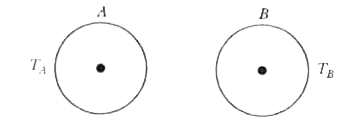
If they are in thermal equilibrium and exchange equal amounts of radiation per second, then they will be at same absoulte temperature, TA=TB.
If they are in thermal equilibrium and exchange equal amounts of radiation per second, the TA=(0.8)1/4TB.
If they ar enot in thermal equilibrium and are each at t =0 at the same temperature TA=TB=T, then the sphere A will loss thermal energy and B gain thermal energy.
If they are not in thermal equilibrium and are each at t=0 at the same temperature TA=TB=T, then the sphere A will gain thermal energy and B lose thermal energy.
The correct Answer is:A
Step by step video & image solution for A and B are two isolated spheres kept in close proximity so that they can exchange energy by radiation as shown in the following figure. The two spheres ,have identical physical dimension, but the surface of A behaves like a perfectly black body while the surface of B reflects 20% of all the radiations it receives. They are isolated from all other sources of radiation. by Physics experts to help you in doubts & scoring excellent marks in Class 12 exams.
Updated on:21/07/2023Topper's Solved these Questions
- HEAT-MEASUREMENT AND TRANSFERBOOK - RESNICK AND HALLIDAYCHAPTER - HEAT-MEASUREMENT AND TRANSFEREXERCISE - PRACTICE QUESTIONS(MORE THAN ONE CORRECT CHOICE TYPE )
8 Videos
- HEAT-MEASUREMENT AND TRANSFERBOOK - RESNICK AND HALLIDAYCHAPTER - HEAT-MEASUREMENT AND TRANSFEREXERCISE - PRACTICE QUESTIONS( LINKED COMPREHENSION)
9 Videos
- HEAT-MEASUREMENT AND TRANSFERBOOK - RESNICK AND HALLIDAYCHAPTER - HEAT-MEASUREMENT AND TRANSFEREXERCISE - PROBLEMS
35 Videos
- GRAVITATIONBOOK - RESNICK AND HALLIDAYCHAPTER - GRAVITATIONEXERCISE - PRACTICE QUESTIONS (INTEGER TYPE)
4 Videos
- HYDROGEN ATOMBOOK - RESNICK AND HALLIDAYCHAPTER - HYDROGEN ATOMEXERCISE - PRACTICE QUESTIONS(Integer Type)
6 Videos
Similar Questions
(a) Two charged bodies, A and B are suspended from a fixed point with the help of silk threads as shown in the figure. If A is positively charged can we identify the nature of charge on 'B' ?
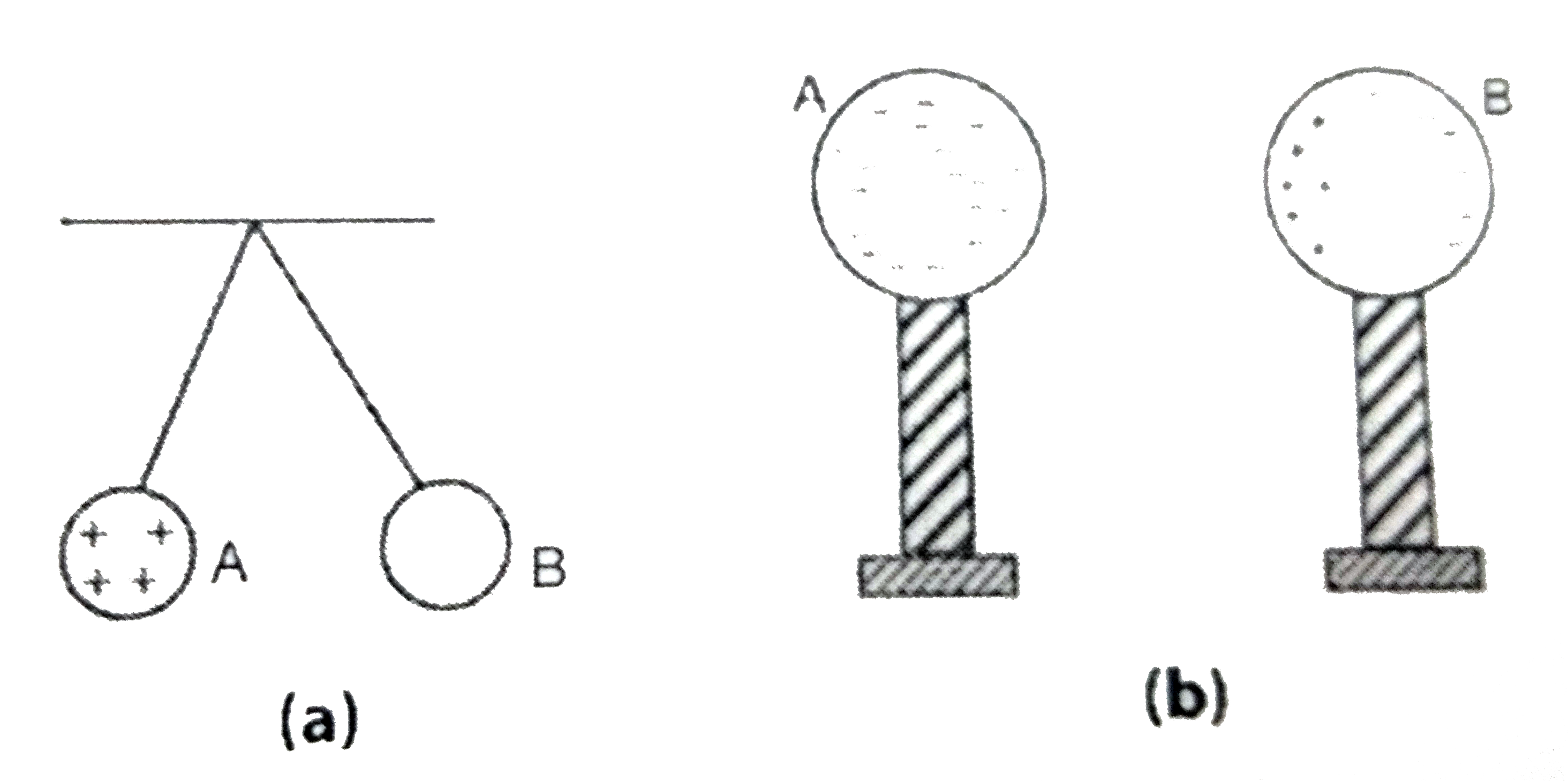
(b) A negatively charged conducting sphere A and a neutral sphere B are kepton insulating stands and brought cose to each other. The charge distri-bution is as shown in the figure.
Is B charged ? What type of force exists between A and B ?
View Solution(a) Two charged bodies, A and B are suspended from a fixed point with the help of silk threads as shown in the figure. If A is positively charged can we identify the nature of charge on 'B' ?

(b) A negatively charged conducting sphere A and a neutral sphere B are kepton insulating stands and brought cose to each other. The charge distri-bution is as shown in the figure.
Is B charged ? What type of force exists between A and B ?
View Solution
Knowledge Check
Two separate segments of equal area are isolated in the energy distribution of black body radiation (As shown in the following figure). Let us assume that the number of photons emitted by the body per unit time in the segments is n1andn2 and the energy of the photons are E1andE2 respectively. Then
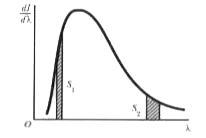 An1>n2Bn1<n2CE1<E2DE1>E2
An1>n2Bn1<n2CE1<E2DE1>E2Two uncharged conducting spheres, A and B, are suspended from insulating threads so that they touch each other as shown in the figure. While a negatively charged rod is held near, but not touching sphere A, someone moves ball B away from A. How will the spheres be charged, if at all ?
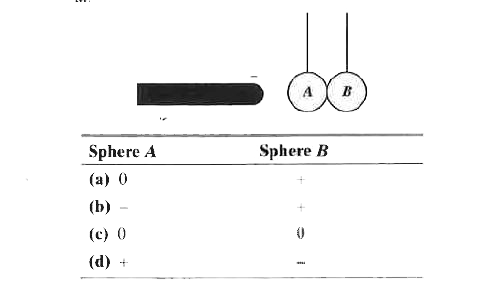 ASphere A - 0, Sphere :- +BSphere A - 0, Sphere :- +CSphere A - 0, Sphere :- 0DSphere A - +, Sphere :- -
ASphere A - 0, Sphere :- +BSphere A - 0, Sphere :- +CSphere A - 0, Sphere :- 0DSphere A - +, Sphere :- -Three balls, A, B and C, are released and all reach the point X (shonw in the figure). Balls A and B are released from two identical structures, one kept on the ground and the other at height, h, from the ground as shown in the figure. They time tA and tB respectively to reach X (time starts after they leave the end of the horizontal portion of the structure). The ball C is released from a point at height, h, vertically above X and reaches X in time tC. Choose the correct statement.
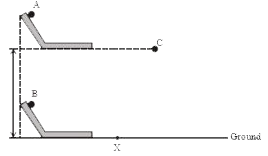 AtC<tA<tCBtc=tA=tCCtc=tA<tcDtB<tA=tC
AtC<tA<tCBtc=tA=tCCtc=tA<tcDtB<tA=tC
(a) Two charged bodies, A and B are suspended from a fixed point with the help of silk threads as shown in the figure. If A is positively charged can we identify the nature of charge on 'B' ?

(b) A negatively charged conducting sphere A and a neutral sphere B are kepton insulating stands and brought cose to each other. The charge distri-bution is as shown in the figure.
Is B charged ? What type of force exists between A and B ?
View SolutionTwo identical plane metallic surfaces A and B are kept parallel to each other in air separated by a distance of 1.0 cm as shown in fig. Surface A is given a positive potential of 10V and the outer surface of B is earthed. (i) What is the magnitude and direction of uniform electric field between points Y and Z ?
(ii) What is work done in moving a charge of 20μc from point X to Y, where X is situated on surface A ?
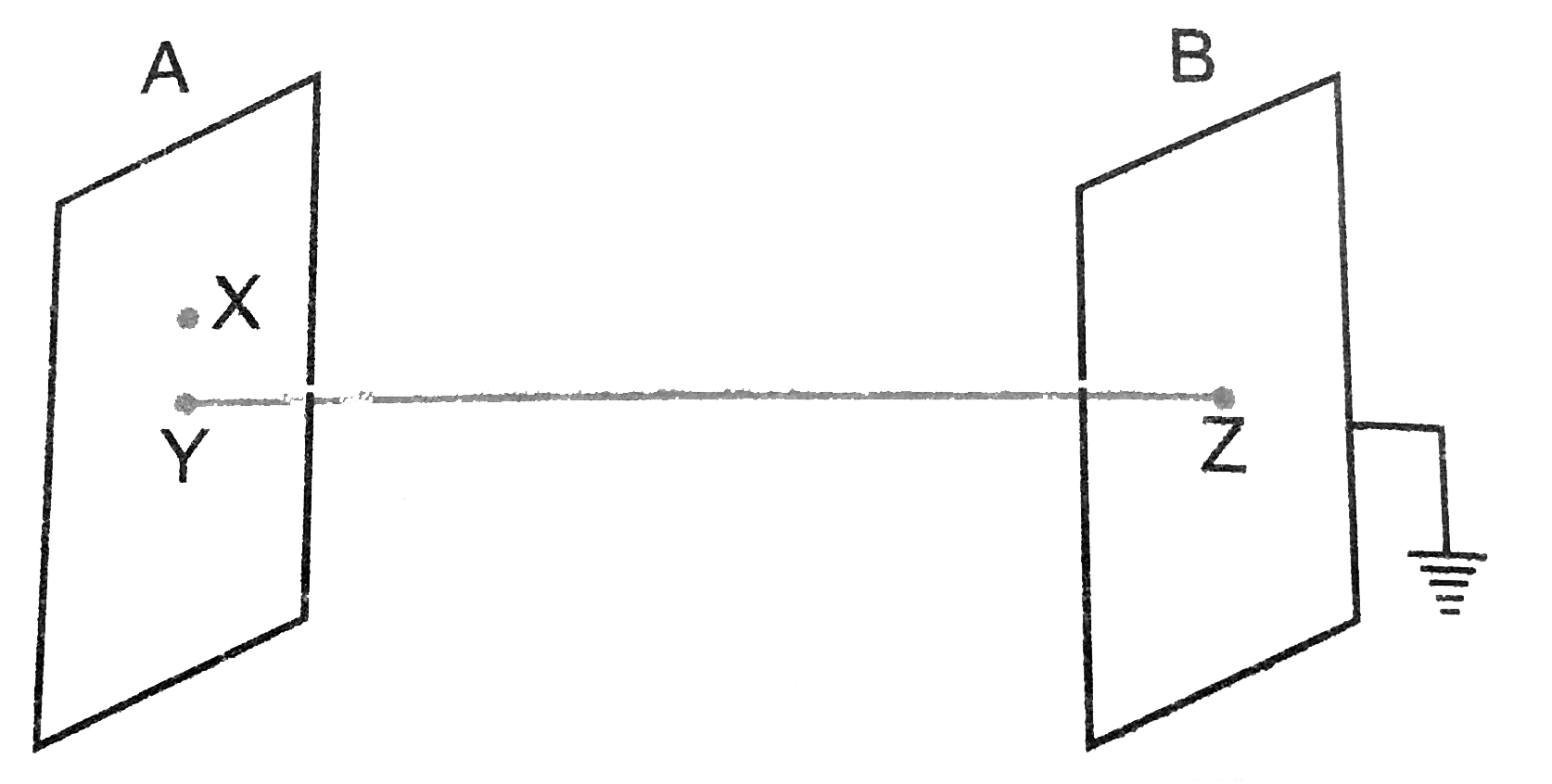
View SolutionTwo identical blocks, each having mass M, are placed as shown in figure. These two blocks A and B are smoothly conjugated, so that when another block C of mass m passes from A to B there is no jerk. All the surfaces are frictionless, and all three blocks are free to move. Block C is released from rest, then
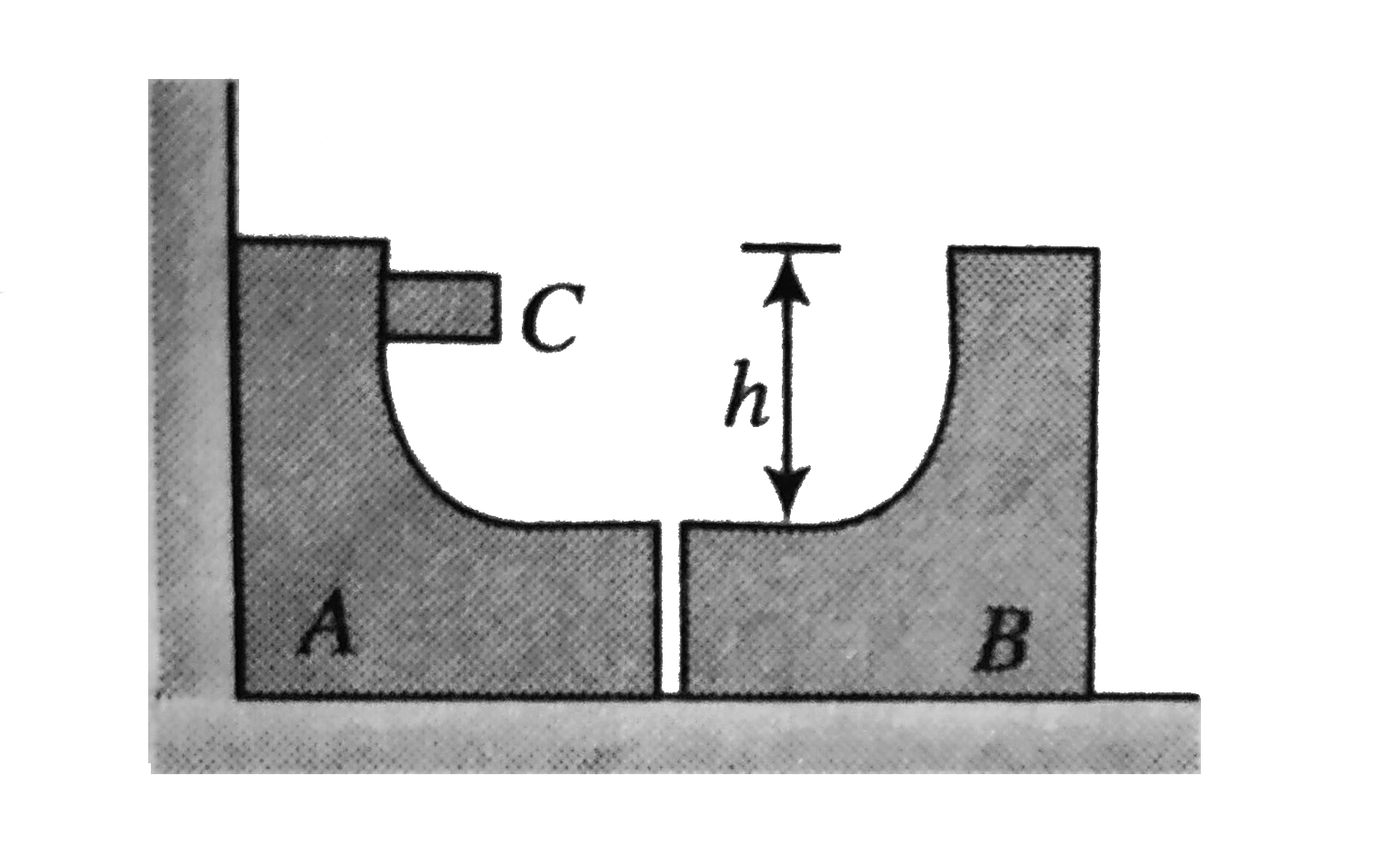
View SolutionTwo fixed identical metallic spheres A and B of radius R=50cm each are placed on a non-conducting plane at a very large distance from each other and they are connected by a coil of inductance L=9mH as shown in figure. One of the spheres (say A) is imparted an initial charge and the other is kept uncharged. The switch S is closed at t=0. After what minimum time t does the charge on the first sphere decrease to half of its initial value ?

View SolutionA small spherical ball of mass m is projected from lowest point (point P) in the space between two fixed, concentric spheres A and B (see figure). The smaller sphere A has a radius R and the space between the two spheres has a width d. The ball has a diameter very slightly less than d. All surfaces are frictionless. Speed of ball at lowest point is v. NA and NB represent magnitudes of the normal reaction force on the ball exerted by the spheres A and B respectively. Match the value of v given in column–I with corresponding results in column–II.
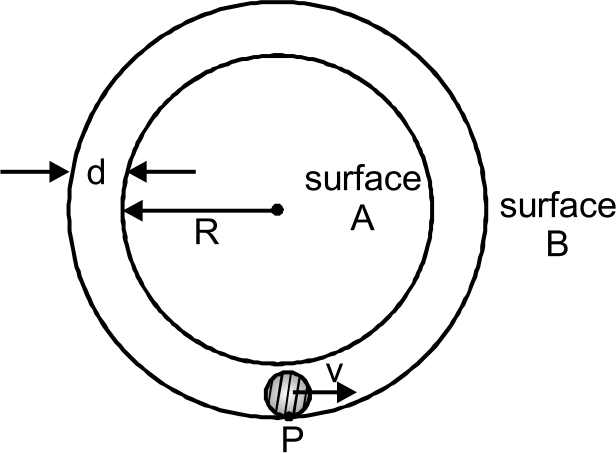
View Solution
